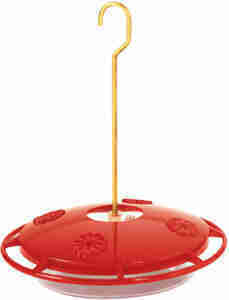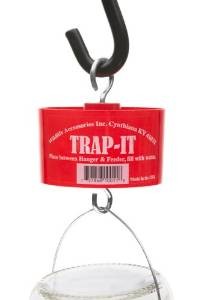Use Hummingbird Feeder Nectar To Make Your Hummingbirds Happy
by: Sonia Schmieder
Hummingbird Feeders and Nectar
Homemade Hummingbird Food Recipe
How To Make Hummingbird Food At Home
What do hummingbirds eat?
Hummingbirds are nectivores and insectivores; approximately 90% of their diet comes from nectar and 10% from arthropods (flies, wasps, spiders, beetles, and ants). If you watch closely, you will sometimes notice them picking insects out of spider webs or off leaves, bark, etc.
What is the composition of hummingbird feeder nectar?
The sugar in flower nectar is primarily sucrose, like that of white sugar. So don’t use honey or artificial sweeteners (illogical says Spock, but some people do). Many of the flowers hummingbirds feed upon have a sugar concentration of approximately 20%.
How do I make my own hummingbird feeder nectar?
To imitate the natural flower sugar concentration of 20%, use a solution of 1:4. This won’t give you an exact concentration of 20% because in reality sugar and water molecules have different atomic weights…yada yada yada…which means you can’t simply divide to get your percentage by volume alone. Anyway, 1:4 will actually give you an 18.6% sugar concentration. Close enough, and the hummingbirds won’t be saying, “Where’s the other 1.4%?!”
As an example, you can mix 1 cup of sugar with 4 cups water. If you only have one feeder and don’t want to store leftover mix (fresh is always better), then use 1/4 cup sugar to 1 cup of water.
What if I want to make the hummingbird feeder nectar stronger?
Well research has shown that when given the option, hummingbirds preferred higher concentrations of sugar in their nectar, up to 50%. But I would stick with 20%. It will be easier to keep your feeders clean which is essential. Feeders will be less sticky and the chance of the solution fermenting or growing fungus (mold) is less. The mold that grows in hummingbird feeders can give hummingbirds a fatal tongue infection.
What if I want to make the hummingbird feeder nectar weaker?
The more diluted the nectar, the more consumption of nectar is needed to satisfy a hummingbird’s energy requirements. Weaker concentrations are less attractive to hummers and you’ll find they may just stop coming to your feeder to find a better, concentrated source. So stick to 1:4.
What about adding red dye to my hummingbird feeder nectar to attract hummingbirds?
Not necessary. There still debating this one, but artificial colors may be harmful to hummingbirds. So don’t add any. If you want to add some color to your feeder, use red ribbon or tape instead of dyes to attract them. Once hummingbirds start visiting, they’ll know where to return and the extra color isn’t needed.
How often should I clean my hummingbird feeder?
You should clean your feeders at least every 3 days in hot weather and 6-7 days in cool weather. Otherwise fermentation can occur in the hummingbird feeder nectar and mold and bacteria will grow, which can be fatal to hummingbirds. In addition, hummers won’t like the taste of the nectar and stop coming to your feeders.
Follow these steps to keep your hummingbird feeder clean and your hummingbirds healthy:
1. Empty reservoir and rinse in a mixture of hot water & vinegar
2. Add rock salt or uncooked rice grains to the rinse & shake to dislodge mold (black scum)
3. Empty feeder and rinse again thoroughly with hot water
4. If mold or any other residue remains, scrub with a toothbrush or bottle brush
5. Refill with nectar solution, hang feeder and enjoy!
Wishing you bird watching bliss!
Sonia
About The Author
Sonia Schmieder has worked with private, state, and federal agencies on bird reasearch and education. She enjoys sharing her knowledge and love of birds via her website, http://www.Birdwatching-Bliss.com. Please visit for additional information about hummingbirds, bird feeders, bird houses, bird biology, choosing bird watching binoculars and more!
© Copyright www.Birdwatching-Bliss.com. All Rights Reserved
Now that you know all about hummingbird feeder nectar, you will need to get a feeder that is easy to take apart and clean, and one that will also protect your hummingbird feeder nectar from bees ants and wasps.
My favorite choice of hummingbird feeders to use with the hummingbird feeder nectar is  Aspects 12oz Hummzinger Ultra With Nectar Guard
Aspects 12oz Hummzinger Ultra With Nectar Guard
It has several features that makes it well worth the price.
The HummZinger has patented Nectar guard tips which are flexible membranes attached to the feed ports that prohibit entry from flying insects, but allow Hummingbirds to feed as usual. The HummZinger also has a built in ant moat that will stop crawling insects from getting to the nectar. It also has raised flower ports that divert rain.
This mid-size nectar feeder has a 12 oz. capacity and can be hung or post mounted with hardware provided. It has four feeding ports for hummingbirds and is made of unbreakable polycarbonate. Easy to clean.
For ease of cleaning and protection from bees, wasps and ants, this feeder can’t be beat.
If you already have a hummingbird feeder, and you want to protect your hummingbird feeder nectar from ants and other crawling insects, the ant moat below will do the job.

Trap-It Ant Moat to Protect Your Hummingbird Feeders
Product Description
The first and still the best to protect your Hummingbird and Oriole feeder from ants and other crawling insects. Insert between hanger and feeder and fill with water, providing a barrier to crawling pests. Red color to attract hummingbirds.
I hope you enjoyed this article on hummingbird feeder nectar. Click the link for more articles related to hummingbird feeder nectar.

